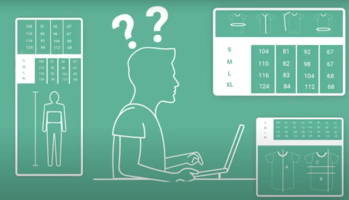The Future of Retail: Trends Shaping Apparel and Footwear




The fashion industry is all about finding the right clothing style and size for customers. However,...

The retail landscape for apparel and footwear is evolving rapidly, driven by technological advancements and changing consumer behaviors. As we look to the future, several key trends are set to redefine these industries, offering exciting opportunities for growth and innovation.
1. Personalization and Customization in Fashion
The future of apparel and footwear lies in creating personalized shopping experiences. Advances in AI and machine learning are enabling retailers to offer highly customized product recommendations. This level of personalization is particularly impactful in fashion, where fit and style preferences are crucial. From custom-fit shoes to tailored clothing recommendations, retailers can align products more closely with individual tastes, enhancing customer satisfaction and boosting sales. Discover more on this topic in our previous blog on Data-Driven Sizing Insights.
2. Omnichannel Shopping Experience
In the apparel and footwear sectors, the line between online and offline shopping is increasingly blurred. Consumers expect a seamless omnichannel experience that integrates digital and physical retail spaces. This includes everything from virtual try-ons and mobile app integrations to social media shopping and in-store pickups. By offering a cohesive shopping journey, retailers can meet consumer expectations and stay competitive.
3. Sustainable Fashion Practices
Sustainability is becoming a major driver in the apparel and footwear industries. Consumers are increasingly drawn to brands that prioritize eco-friendly practices, such as using sustainable materials, ethical manufacturing processes, and reducing waste. Brands that embrace sustainability can attract a growing segment of environmentally conscious consumers, while also contributing to environmental conservation.
4. Leveraging Advanced Analytics and Big Data
In the highly competitive apparel and footwear markets, big data and advanced analytics are invaluable. Retailers are using these tools to gain insights into consumer behavior, optimize inventory levels, and streamline supply chains. For example, analyzing purchasing patterns can help predict fashion trends, allowing brands to stock the right products at the right time.
5. The Role of AR and VR in Fashion
Augmented Reality (AR) and Virtual Reality (VR) are transforming how consumers interact with apparel and footwear products. These technologies allow customers to visualize how clothing and shoes will look and fit before making a purchase. This is particularly useful in reducing return rates, as customers can make more informed decisions. Virtual fitting rooms and AR-enhanced product views are becoming standard features in the industry.
6. The Impact of AI and Robotics
AI and robotics are revolutionizing various aspects of the apparel and footwear retail experience. From automated customer service chatbots to robots managing inventory and logistics, these technologies are improving efficiency and customer satisfaction. For instance, AI-driven style assistants can provide personalized fashion advice, while robotic systems can enhance the speed and accuracy of order fulfillment.
Conclusion
The future of retail in the apparel and footwear sectors is dynamic and filled with opportunities for innovation. Retailers who embrace trends like personalization, omnichannel integration, sustainability, advanced analytics, AR/VR, and AI will be well-positioned to thrive in a rapidly evolving market.